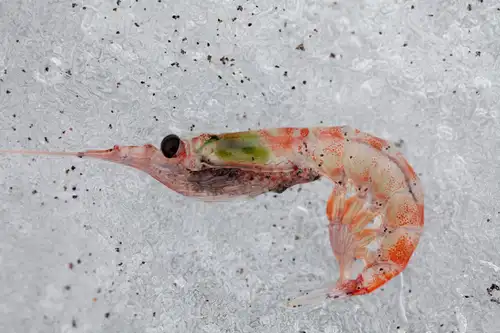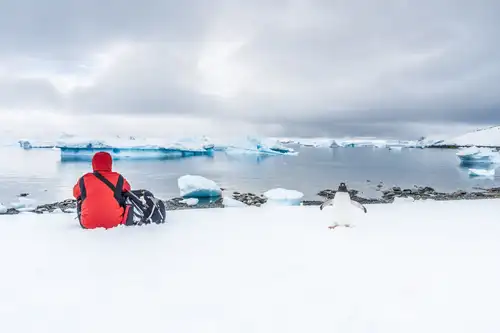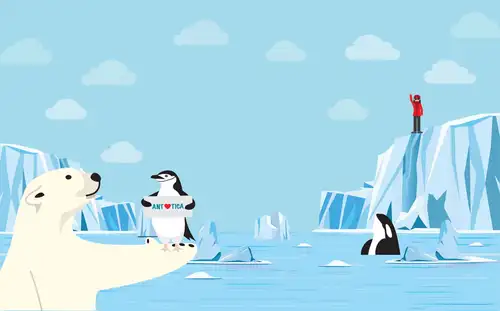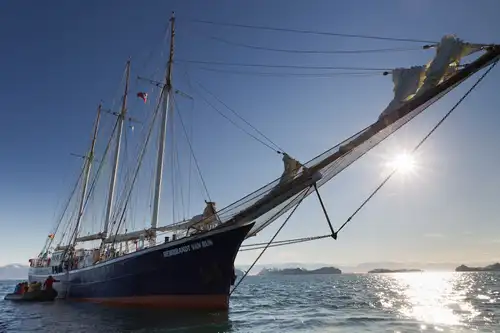In the most remote reaches of the world's oceans, those daring enough to embark on the Ortelius to the Ross Sea eagerly boarded zodiacs in the southernmost part of the Pacific Ocean.
Today’s destination? Franklin Island.
Franklin Island is more than just a heap of volcanic debris in the Ross Sea; it is actually the remnants of a shield volcano. It wasn't until 1841 that Sir James C. Ross discovered the island off the coast of Victoria Land during his quest to reach the south magnetic pole. Ross chose to name the island in honor of John Franklin, the Arctic explorer and governor of Van Diemen's Land (Tasmania).

Adélie penguins hopping from rock to rock, Weddell seals yawning, and perfectly iced volcanic rocks under an eerie Antarctic sky greeted us as we navigated between rocky outcroppings near the southern edges of Franklin Island. However, as we rounded a corner, we were hit by the overwhelming stench of guano. This pungent odor, a mix of all things putrid, can wake you up faster than ten shots of espresso. With watering eyes, we approached the large Adélie colony on the southern beach of Franklin Island.

As our nasal passages adjusted to the unpleasant smell, everyone was struck by the imposing sight of Bernacchi Head. Named after Louis Bernacchi, a physicist and astronomer renowned for his Antarctic explorations, Bernacchi Head left a lasting impression. One passenger even remarked that the sight of Bernacchi Head brought tears to her eyes—not from the guano, but from the indescribable stark beauty of this remote island.
Blog



Under the Greenland Ice Sheet

Seven Tips to Get the Most out of Your Expedition Cruise

Orcas (aka Killer Whales) of Antarctica and the sub-Antarctic

Antarctic krill: Antarctica's Superfood

Visa to Argentina for Antarctic Expedition Travelers (2025 Guide)

Deception Island deceptively active

Adding Antarctica to Your Seven-Continents Bucket List

Seven Facts About Antarctic and Sub-Antarctic Penguins

Arctic Mythology: Inuit, Saami, and the Ancient Greeks

10 Books and Films To Prepare for your Antarctica cruise

The Ways and Wildlife of the Weddell Sea

Arctic vs. Antarctica: A Traveler’s Guide

A Look Into the International Research Stations of Antarctica

What to Expect When Crossing the Drake Passage

The Most Enchanting Antarctica Cruise Islands

All About Ice: Glaciers and Icebergs of the Arctic and Antarctica

Polar Marine Visitors: the Whales of Antarctica and the Arctic

Ancient Arctic Exploration

Eight Antarctic Misconceptions






